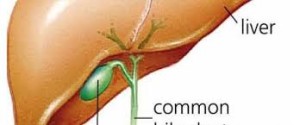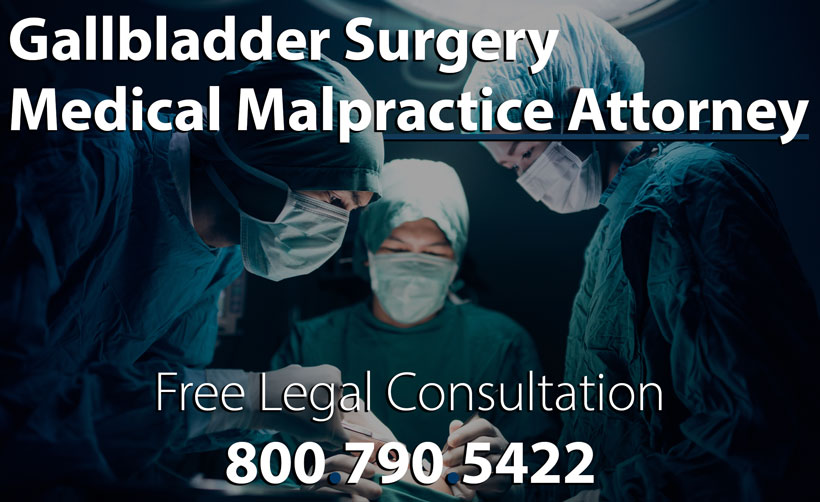Welcome to the website of the best medical malpractice lawyers in California. As medical malpractice attorneys, we often come across clients who have been harmed during gallbladder removal surgery. If you believe you have been harmed by such procedures, our gallbladder surgery malpractice attorneys can file a lawsuit against all the responsible parties. We serve the entire state of California, including Los Angeles, San Bernardino, Riverside, Long Beach, San Diego, San Francisco, Fresno, Bakersfield, Stockton, and Orange County.
We often get asked by our clients the following types of questions:
Can I sue a doctor for gallbladder surgery malpractice?
Can I sue a hospital for gallbladder removal surgery malpractice?
How do I file a gallbladder surgery lawsuit?
How much is a cut (severed) bile duct lawsuit worth? Do I need a lawyer?
How much does it cost to file a gallbladder surgery malpractice lawsuit?
How can I hire the best gallbladder removal surgery attorney?
Gallbladder removal is one of the most frequent medical procedures conducted in the United States. The past two decades have witnessed an increase in the use of the laparoscopic method during the performance of such procedures. The advances in surgery have vastly improved the rate of recovery amongst patients. However, the use of the minimally invasive method has increased the probability of operative and postoperative complications. According to one study in comparison to open gallbladder removal methods, the use of laparoscopic procedures has increased the rate of complications by 100% from .3% to .6%.
In some instances, laparoscopic operations result in significant injuries, the most common being the severing of the bile duct, and lacerations to the pancreas. Other medical issues which can result include severe infections, bile leakage, and Cholangitis. Victims can suffer drastic lifetime physical issues resulting in harm to a patients quality of life, increased rate of death, increased lifetime healthcare costs, and recurring gastrointestinal complications. Victims of such injuries are entitled to compensation for all damages suffered. If you have any further questions feel free to contact our law firm.
Severing of the Bile Duct During the Procedure
 One of the most common injuries that may take place during a laparoscopic gallbladder surgery is the cutting or severing of the bile duct. There are numerous factors which can significantly increase the risk of harm to a patient. Laceration of the wrong bile duct can be caused by many factors including:
One of the most common injuries that may take place during a laparoscopic gallbladder surgery is the cutting or severing of the bile duct. There are numerous factors which can significantly increase the risk of harm to a patient. Laceration of the wrong bile duct can be caused by many factors including:
- Lack of attention on the part of the practicing physician.
- Failure to convert to traditional methods, open cholecystectomy, when it is realized that it is difficult to see via the use of the laparoscopic method.
- Racing through the surgery without being diligent and cautious.
- Inadequate training and experience of the physician.
- Failure to communicate with other members of the team during the procedure.
Common Signs and Symptoms of Bile Duct Injuries: Some of the most common signs include high fever, jaundice, vomiting, general nausea, extreme pain, and discomfort. Any person experiencing these symptoms following such procedures should seek medical attention as soon as possible.
When Gallbladder Surgery should be recommended by Specialists
Gallbladder removal surgery is usually recommended in patients who suffer from frequent bouts of gallstones. Gallstones are rock-like substances created from hardened bile trapped in the gallbladder. In most cases gallstones cause little or no symptoms and thus go unnoticed. In some patients, gallstones can result in significant pain in the upper right portion of the abdomen, severe back pain, and shoulder pain. Certain individuals are at an increased risk of developing gallstones in their lifetime including individuals who are Latin Americans, overweight, consume high cholesterol and fat diets, pregnancy, with genetic and familial history of gallstones.
Our Recent Verdicts and Settlements
$295,000
$250,000
$1.5 Million
$1.1 Million
$734,851
$460,000
Avoiding Injury to the Bile Duct During Gallbladder Removal Surgery
The incidence of bile duct injury during such procedures can be drastically reduced. Some measures that should be undertaken by surgeons before an operation include the following.
- Avoiding Visual and Perceptual Illusions: The use of cameras during an operation can result in perceptual errors for the surgeon performing the procedure. When performing the operation the surgeon needs to be aware of certain visual landmarks in the centralized cavity so as to avoid misidentification. These landmarks are to be used to point the doctor in the right direction. Some of those landmarks include the neck of the gallbladder, Hartman’s pouch, and the cystic lymph node.
- Failure to retract the gallbladder when during the incision: A common mistake made by surgeons during gallbladder removal is their failure to completely retract the organ away from the cystic duct so as to about cutting.
- Failure to opt for an open operation in cases where it may be required: Because of the peculiarities in the anatomy of many patients doctors should opt for the open surgery method instead of minimally invasive procedures. Unfortunately, surgeons will not realize this until they have started operating on the patient using the laparoscopic method. At that point, it is advisable to stop the procedure and opt for the use of the open surgery method at a future time. However many doctors fail to take this action and will attempt to finish the surgery.
- Thermal injury via the misuse of the laser: Surgeons must be aware of the potential risk in the use of lasers in organ removal procedures. Practicing physicians must use cautery devices in a measured manner. The proper method in the use of such devices must include the lifting of the tissue from under the gallbladder. Also once the soft shell of the organ is punctured and opened up the surgeon must switch from a cautery device to a surgical scissor, more precisely known as a peanut for its bulbous head. Another common issue is cauterizing the cystic duct when metallic clips have been placed. The reason being that metals can conduct heat from the nearby cauterization resulting in damage to the attached tissue.
- Eagerness of the practicing surgeon to cauterize during an acute emergency during the procedure: In some cases, the patient’s body cavity contains areas of inflammation or scar tissue which when incidentally punctured may result in the release of large quantities of blood. This can cause severe levels of visual obstruction for the surgeon during a laparoscopic procedure. In response, surgeons will attempt to alleviate the sudden rush of blood by cauterizing the open wound. This can result in damage to nearby organs including the liver, pancreas, bile duct and bowl. The use of cautery as a tool to stop the hemorrhaging of blood into the operational cavity should be avoided in order to reduce the incidence of organ damage.
Scientific Categories for the Types of Gallbladder Injuries
There are several categories of injuries which can take place during a gallbladder removal surgery. A brief and consolidate list of those injuries is provided for below.
- Contusion of the gallbladder.
- Perforation of the organ.
- Total severing of the gallbladder from the liver.
- Laceration of the bile duct
- Severing of the cystic duct often resulting in leakage of bile
- Burn injuries to the bile duct resulting from the use of cautery
- Partial or total Transection of the bile duct
- Peripheral bile leakage and leakage from the cystic duct and gallbladder fossa
Severed Bile Duct Repair Treatments, Repair, and Procedures
Repair of the severed or partially cut bile duct can be a complicated procedure rife with its own risks and potential complications. The bile duct it the channel that carries bile from the liver to bowel. Bile is created in the liver for the purpose of breaking up the fat that has been digested; with the gallbladder being the storage facility for the bile. When extra bile is required, usually during the digestion of fatty foods, the gallbladder will jump into motion and secrete bile into the bowel.
Reconstructed Biliary Surgery: There are several types of biliary surgery methods which can be implemented to treat a gallbladder surgery removal severed bile duct injury.
Use of Non-Surgical Treatment: In some cases, non-invasive procedures using an endoscopic tool to insert a stent into the bile duct in order to block off the leakage is used. This method of relief is used when there is a partial tear of the bile duct. According to recent data, the use of this method to block off bile leakage is successful in 40% to 80% of cases. Common risks associated with the use of the endoscope to place a stent within the bile duct include damage to nearby organs including the liver and colon. According to data the use of this method is less effective when compared to open surgery and can result in a higher probability of procedural complications. However many doctors choose to use this method. Interventional radiologists are the physicians who have the skill set to perform these procedures.
Use of Surgery in Treating Bile Duct Injury Claims: Once there is an indication of a torn or severed bile duct during a gallbladder removal surgery it is advisable to immediately switch to an open surgery method during the procedure. This way the practicing surgeon is able to see the surgery site better and thus be able to quickly gauge the problem and fix the issue. Unfortunately, in many cases, doctors who know that a mistake has been made and the bile duct has been damaged continue to use the laparoscopic method to fix the issue without converting to the open surgery method resulting in a significantly increased probability of harm to the patient.
In some cases, the surgeon will not be able to fix and reattach the severed duct. Once the surgeon realizes there has been damage to the bile duct the surgeon should make sure all the leaking bile is drained from the body cavity. Then the patient needs to be referred to a specialist in the field of hepatobiliary and pancreatic surgery. In some instances, these surgeons are able to perform Whipple surgery.
Whipple Surgery or Pancreaticoduodenectomy: Whipple surgery is an extremely rigorous operation that may have to be performed in cases where the damage to the internal organs nearby the gallbladder cannot be treated. Historically the mortality rate for Whipple procedures was very high and thus was used sparingly. Today Whipple surgeries are more common because of the greatly reduced rate of harm associated with its implementation. The bile duct, gallbladder, a part of the bowel and the liver are removed and then reattached back together.
Hepaticojejunostomy – Reconstruction of the Bile Duct: In some cases too much tissue has been destroyed in order to reattach the two ends of the severed bile duct together. Instead, a piece of the small intestine is used to close the two ends of the duct together.
Future Health Concerns and Complication
There can be serious complications associated with a severed bile duct, the most serious of which can include hepatic failure, cirrhosis, and death.
- Hepatic Failure: Otherwise known as liver failure. In most cases, liver failure is acute, meaning that through proper treatment the liver will return to normal. In some cases, liver failure can be chronic requiring a liver transplant. In many cases, victims will die because of the inability to receive a transplant in time.
- Biliary Cirrhosis: The liver contains numerous veins (ducts) for the purpose of transporting bile to the intestines. In some cases, even following a repair, the entire biliary system will necrotize and die. There is no treatment for biliary cirrhosis, as a result, the only treatment is the treatment of the disease with the use of medication. In some cases, the cirrhosis will expand into the liver requiring a liver transplant.
Ascertaining Liability – California Surgical Procedure Negligence and Error Laws
In order to successfully sue a doctor or sue a hospital for medical negligence, an attorney requires the showing of four essential elements.
- Establishing a duty owed by the defendant to the injured party: Physicians owe a duty to provide the medical care deemed essential by the principles established by the medical profession.
- Breach of duty of care: Breach of duty takes place when there has been a deviation from the standard of care established by the medical profession.
- Causation: The breach of the duty of care was a cause of the injury suffered by the injured party.
- Injuries: The victims suffered action and discernible injuries.
Compensation Available for Victims of Surgical Error Claims in California
In the state of California victims of harm due the improper medical procedures are owed a right to compensation for all harms suffered. Specific types of damages compensable in such cases include the following. Note: there may be some limitations to the recovery of non-economic damages in certain jurisdictions in the United States for a gallbladder malpractice lawsuit.
- Recovery for all medical and health-related costs associated with treatment and rehabilitation care.
- All future medical and rehabilitation expenses that will be incurred.
- All other economic damages including loss of income and loss of future earning capacity.
- Non-Economic damages – including pain and suffering, emotional distress and punitive damages. Note: In the state of California non-economic damages are limited to a maximum of $250,000.
Many clients ask us what the value of their cases are, but we cannot determine the true worth of a case by simply looking at it. An insurance agent will determine how impactful your injuries were and how much of an effect they had on you. You can, however, compare your injuries and situation to other lawsuits to see what could possibly be earned in similar situations. We have provided some examples of these sample results below.
- $1,100,000 Settlement: A doctor began to conduct a laparoscopic surgery, but upon seeing adhesions, switched to an open procedure. In his confusion, he misinterpreted an intraoperative cholangiogram (imaging of the bile duct) and did not reimage it. As a result, the doctor caused a transection of the patient’s bile duct. She sued for medical malpractice.
- $225,000 Settlement: A woman needed to have her gallbladder removed in a laparoscopic surgery. The surgeon was supposed to clip and cut the cystic duct; instead, she snipped the hepatic duct. The surgeon realized her error and tried to fix her slip up, but to no avail; as a result, the patient required numerous procedures to fix the problem. The surgeon admitted to not properly confirming the anatomy of the patient.
- $150,000 Verdict: A simple laparoscopic cholecystectomy resulted in severe pain for a patient. He was admitted to the hospital with complaints about stomach pain, and it was discovered that his bile duct and hepatic duct were sliced. The man needed surgical repair a few weeks later. The claim was made that the surgeon sliced the ducts and did not divulge the information, leading to the problems, but the surgeon denied the accusation. He is unable to explain how the injury would have happened otherwise.
- $175,000 Verdict: A patient undergoe laparoscopic surgery to remove his gallbladder, but it is later detected that the surgeon mistakenly tore his intenstines. The necrosed sectoin is not found until five days after the surgery. The tear rotted and forced doctors to remove a portion of the man’s intenstines.
Statute of Limitations for Filing a Medical Malpractice Lawsuit in California
Generally, a victim of personal injury in the state of California has two years from the date of an incident resulting in harm to file a civil claim in the court of law. However, for medical malpractice cases, a victim has only ONE YEAR to file a civil claim in the court of law. There are government exceptions. If the incident takes place in a government-owned or run medical facility a victim is required to file a properly filed administrative claim within six months from the date of the incident resulting in the harm suffered. Afterward, a claimant will have six months from the date of the rejection of the claim. Contact our bile duct surgery malpractice lawyer in Los Angeles to find out if a lawsuit can be filed on your behalf.
Is there a Way to Bypass the Statute of Limitations: In some instances courts have granted a tolling of the statute of limitations, thus allowing an individual to file a claim despite the passing of the official deadline.
- Minor statute – the victim was under the age of 18.
- Physical and mental incapacity.
- Failure to comprehend the injury suffered until after the statute of limitations had passed.
- Death of the victim.
Note: There are important rules and regulation with respect to the time period an individual has to file a claim. One should not hesitate to contact a gallbladder surgery attorney in Los Angeles as soon as any post-surgical complication arise.
Cost of Legal Representation: One of the chief concerns of injured patients is the seemingly high costs for hiring an attorney. In fact in most cases this is true; many medical malpractice attorneys will ask clients for thousands of dollars in retainer fees. Other attorneys will ask for thousands of dollars just to review your medical records. Our law firm is different; we work exclusively on a contingency fee agreement meaning that you will not have to pay a single penny out of pocket for our fees and legal expenses. If, for any reason, there is no recovery in your case you will not owe us a single penny.
Attorney Representation Available: If you have any further legal questions concerning the filing of a lawsuit for injuries suffered during gallbladder surgery feel free to get in touch with our laparoscopic bile duct surgery lawyer. All legal consultations with our attorney regarding your cases are provided 100% free of charge.
Where We’re Located
If you were injured due to gallbladder operation malpractice, you should reach out to an expert attorney at one of our office locations. We can be found across numerous regions. Our firm has offices in the following areas in California:
- Los Angeles
- San Diego
- Bay Area
- San Joaquin Valley
- San Bernardino
- Riverside
We also have offices in Texas in the following areas:
- El Paso
- Austin
- Houston
- San Antonio
- Dallas
Call us today and we’ll get started on your medical malpractice claim.
FURTHER INFORMATION:














2 Comments
A bile duct cut major bile leakage was non stop bag after bag FORTY EIGHT HOUR AFTER OPERATION DOCTOR SAID EVERY THING WENT WELL THEY DID NOT SEE ACKNOWLEDGE BILE CUT ORGAN IN CRITICAL
Bile duct cut as removal of gallbladder but underneath of liver alot of bile drainage bag too many leakage bile in ADOMAL cavity